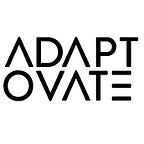THE 4 PILLARS TO MEASURE YOUR AGILE TRANSFORMATION IS GOING IN THE RIGHT DIRECTION
Do you often wonder if your agile transformation is working? Or indeed how do you actually measure it? What are the metrics you need to zone in on? Did you know — When you do a google search on “measuring your agile transformation” that about 13 million results come up?
We could write an entire book on metrics you could look at, however we wanted to give you the ability to quickly assess your own agile transformation based on our extensive global experience. So we’ve distilled how to measure it down to 4 key pillars.
- TEAM BEHAVIOUR
- CULTURE
- PRODCTIVITY
- VALUE TO BUSINESS
There are a many other things you may want to or (depending on your organisation) need to measure to satisfy stakeholders. However, if you can determine that these four pillars have improved since you started on your agile journey — it’s a pretty sure bet your transformation is going in the right direction.
BEFORE YOU BEGIN — UNDERSTAND THE WHY, AND GATHER YOUR BASELINE STATS.
Firstly, our project lead in Melbourne, Mark Barber says you must consider WHY you are transforming. “We like to refer to a “burning platform” or something that is creating urgency for change” he says. “This could be something negative, such as poor engagement, or something positive, such as a drive toward exponential revenue growth.
When you know what that is, you can measure progress of actual change, or progress to real outcomes. What you want to avoid is just measuring outputs, such as jobs filled or surveys completed.” Mark says.
Secondly, Rachna Verma recommends you should have gathered your baseline stats before your transformation began. (tip for organisations about to embark — determine your current metric for each of the four pillars).
She says “Gather revised stats during the transformation and compare to the baseline to determine progress and success. If you cannot see improvements then run a retro and implement actionable change and then retest.”
Now, Let’s briefly dive into each one of the four pillars a bit further. They all feed into each other. But essentially it’s a story of two parts.
PART ONE: BEHAVIOUR & CULTURE
1.Behaviour
A number of metrics indicating internal organization health focusing on individual and team behaviors are important states Slawek Koziol from our Polish office. He says “A transformation cannot be considered a success with team members burn-out, attrition and turn over.” So do a health check on the team. Pronto.
“The success of an Agile transformation boils back to the extent in which the people are demonstrating Agile mindset through their behaviours.” Say Tiong Yeow Tan, a consultant in our Singapore office.
He gives these examples :
- a) To what extent are they demonstrating that they are relentlessly FOCUSED ON CUSTOMERS?
- b) assessing the level of maturity in the way that they are running the Agile ceremonies. He explains “Do they conduct them regularly? Are the right people attending the ceremonies?”
In Adaptovate, we have an Agile maturity assessment that measure both dimensions to provide a quick peak into the progress or success of the Agile transformation” Tiong says.
And if you have improved behaviour — your culture will change.
2.Culture
“Culture is a leading indicator of a successful agile transformation” believes Steve Walton from our New York office. Steve believes that “While you undertake a transformation to deliver value faster, you achieve it by people thinking and working differently. A culture where work is prioritized based on value and where people work in a transparently / collaborative way, is a sign of success.”
When the culture of an organisation improves, two things happen. Better productivity which means improved value to business.
PART TWO: PRODUCTIVITY & VALUE
- Productivity
In their last State of Agile survey — Agile Alliance found that simply looking at burnup charts of count of stories or features over time is hugely impactful in understanding how a team is delivering. (If you need a refresher on Burnup and Burndown charts — this article has it all.) However, we should caution you — increased productivity alone should not define success. However it is a strong indicator things are on the right track in your transformation.
- Value to the Business
Finally, Slawek says “One of the key sources of information on how the agile transformation is progressing is checking whether value is actually delivered, i.e. measuring quantity and quality of the work done by agile teams — using metrics on business value, quality and customer satisfaction as well as planning accuracy, through-put and speed of delivery.”
So, If you need to quickly get a health check on you Agile Transformation — have a look at those four pillars. But looking at just those four — it will unpack a lot more as well, and will give you a solid account of how your agile transformation is going. If you find things aren’t going in the right direction, use your retro’s to quickly resolve any blocks.
